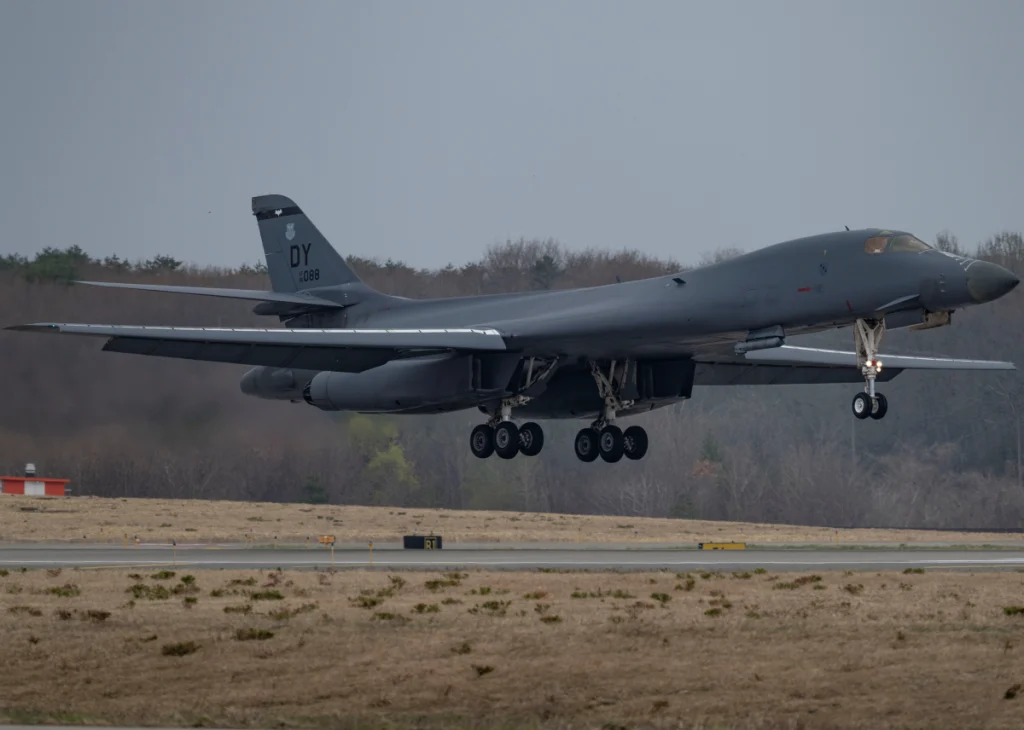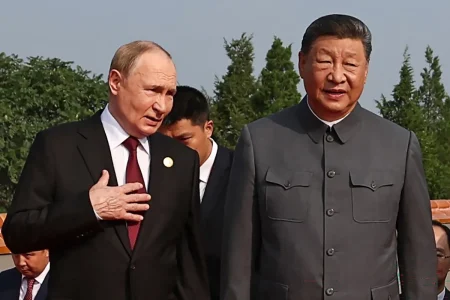U.S. Bolsters Pacific Deterrence with Strategic Bomber Deployment to Japan
In a significant show of military readiness, the United States has strengthened its defense posture in the western Pacific by deploying four B-1B Lancer bombers to Misawa Air Base in northern Japan. This deployment represents another chapter in America’s ongoing strategy to maintain stability in a region increasingly characterized by geopolitical tension. The bombers, traveling from their home station at Dyess Air Force Base in Texas, arrived in two groups on Wednesday and Friday, according to aviation enthusiasts who tracked and documented their journey across the Pacific. This marks the second such deployment to Misawa since April, underscoring the increasing frequency of American strategic bomber presence in proximity to Russia, China, and North Korea – three nations whose military activities have raised concerns among U.S. officials and allies.
The western Pacific has transformed into a theater of growing military competition, with the United States maintaining a constellation of advanced capabilities throughout the region. Beyond these newly arrived bombers, America’s regional military footprint includes F-35 stealth fighter jets, nuclear-powered submarines, and approximately 60,000 troops stationed in Japan alone. This robust presence forms part of Washington’s broader island chain strategy – a series of north-south defensive lines designed to project allied military power across the Pacific. Japan’s geographical position makes it a cornerstone of this strategy, serving as a crucial forward base from which American forces can respond to potential aggression. The deployment comes at a time when each rival nation presents distinct challenges: Russia continues military activities near Japanese territory, China rapidly expands its armed forces with the explicit goal of challenging American supremacy, and North Korea advances its nuclear missile program with concerning speed.
The B-1B Lancer represents a formidable addition to America’s regional deterrent. Though no longer nuclear-capable following modifications under arms control agreements, these supersonic bombers remain among the most powerful conventional strike platforms in the U.S. arsenal. According to Air Force specifications, each aircraft can carry up to 75,000 pounds of bombs and missiles – the largest conventional payload in the service. With intercontinental range and speeds exceeding 900 mph, these bombers can reach any point in the Indo-Pacific theater within hours. During their previous deployment to Misawa in April and May, the B-1Bs participated in exercises with regional allies and partners, demonstrating interoperability and collective defense capabilities. The U.S. Pacific Air Forces characterized these missions as demonstrations of allied strength and unity that promote “peace, stability, homeland defense” while keeping forces mission-ready.
The timing of this deployment appears strategically significant, arriving shortly before a major Japanese military exercise scheduled for October 20-31. This large-scale war game will involve forces from Japan, the United States, and Australia operating across the Japanese archipelago. While officials have not confirmed whether the newly arrived B-1Bs will participate in these exercises, their presence provides commanders with additional options for demonstrating allied capabilities. The U.S. Pacific Air Forces has emphasized that bomber deployments form part of a larger Indo-Pacific strategy focused on maintaining a “free and open Indo-Pacific” rather than responding directly to specific political or economic factors. This carefully calibrated language reflects Washington’s desire to strengthen deterrence without unnecessarily escalating tensions in an already volatile region.
The deployment illustrates America’s broader approach to managing competition with its principal rivals in the region. Rather than responding to each provocation individually, the United States has adopted a strategy of persistent presence – maintaining forces capable of responding to multiple contingencies while demonstrating unwavering commitment to regional allies. When asked about similar deployments in April, the U.S. Pacific Air Forces told Newsweek that the service “routinely deploys a variety of aircraft and units throughout the Indo-Pacific area of operations in support of geographic combatant command objectives and training.” This approach aims to reassure allies while sending a clear message to potential adversaries about the costs of aggression. The effectiveness of this strategy depends not only on the capabilities deployed but also on how these forces are employed – whether they conduct freedom of navigation operations near disputed territories, participate in multilateral exercises, or simply maintain a visible presence in international airspace.
As these bombers begin their deployment at Misawa, regional observers will be watching closely to see how they are utilized in the coming weeks. Previous bomber task force missions have included flights near sensitive areas around the Korean Peninsula and the South China Sea – actions that demonstrate America’s ability to project power while carefully avoiding direct provocation. It remains unclear whether the B-1Bs will conduct similar missions during this deployment, particularly given the heightened tensions surrounding North Korea’s missile program and China’s increasingly assertive posture toward Taiwan. What is certain is that these aircraft represent more than mere military hardware – they serve as physical manifestations of America’s security commitments in a region vital to global stability and prosperity. As one Air Force fact sheet describes the B-1B, it “can rapidly deliver massive quantities of precision and non-precision weapons against any adversary, anywhere in the world, at any time” – a capability the United States clearly wants potential adversaries to remember as competition intensifies across the Indo-Pacific region.














